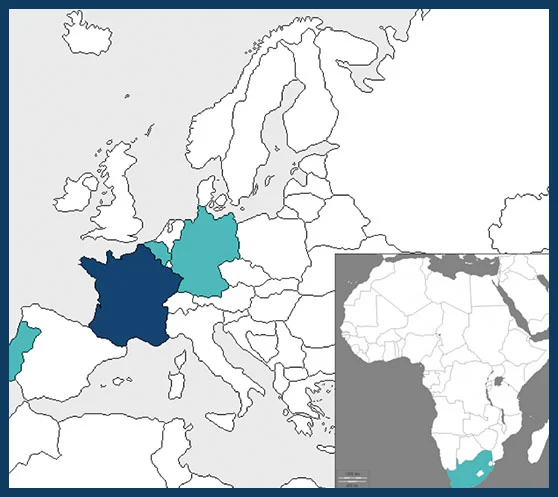06-2014 to 06-2018
€746 010
Antony Herrel
anthony.herrel@mnhn.fr
MNHN – CNRS Paris – FRANCE (Coordinator)
Royal Belgian Institute of Natural Sciences – BELGIUM
Zoologisches Forschungsmuseum Alexander Koenig – GERMANY
Fundação da Faculdade de Ciências da Universidade de Lisboa – PORTUGAL
Stellenbosch University – SOUTH AFRICA

Xenopus laevis is one of the world’s most widely distributed amphibians with invasive populations that have become established on four continents. Invasions are due to both accidental escape and voluntary release of laboratory animals in many cases. Although impacts of invasive X. laevis on native populations of amphibians and fish have been documented, systematic studies examining the impact of this species on both vertebrate and invertebrate communities are lacking. Moreover, X. laevis has been implicated in the global transmission of disease including chytridiomycosis, a disease cited as one of the principal causes for the global decline in amphibians. Yet, landscape level data on the presence of X. Laevis across Europe are lacking. Alarmingly, a recent study suggested that the invasion potential of X. laevis has been severely underestimated and that many areas, both globally and in Europe, were potentially threatened by invasion. In particular, this species is of serious concern in Europe as it is known to be invasive in at least four countries (France, Portugal, Italy and the U.K.) and the suggested suitable climatic space for X. laevis covers over one million square kilometers, making this species of pan-European concern.
INVAXEN aims at better understanding the biology, dispersal patterns, physiology, invasive potential, and impact on local populations, of X. laevis.
1. Study of the biology of X. laevis
The ecology, physiology, and population genetics of both invasive and native South-African populations will be studied. The comparison with the populations of origin in South Africa is crucial to understand how animals have adapted to novel and different environments, key to their invasive success. Moreover, an evaluation of the impact of X. laevis on local vertebrate and invertebrate communities will be conducted. The presence/absence of chytridiomycosis in known invasive populations in Europe will also be investigated. To assess the mobility and movement patterns of the species in the wild, mark-recapture studies will be conducted as well as experimental measurements of mobility in large enclosures. The temperature and hydric (humidity) effect on locomotion of native and invasive populations will also be studied. Finally, the genetic diversity of native and invasive populations as well as gene flow within and between populations will be quantified.
2. Modeling future distribution of the species
The data obtained on movement patterns, gene flow, and physiology will be used to establish species distribution models allowing an assessment of the potential future distribution of the species in few European countries, in particular France and Portugal, at a landscape level. It will also allow predictions of the potential future spread of this species outside of its current invasive range under different scenarios of global change that incorporate temperature and rainfall data. As such, the project will allow identifying areas of primary concern for future invasions.
3. Development of a reinforced eradication program
INVAXEN will contribute to the follow-up and improvement of ongoing eradication programs of this species in Portugal and France in collaboration with relevant stakeholders. These data will help policy makers at the local, national and European levels in deciding how to restrict the ongoing invasion and prevent future invasions.